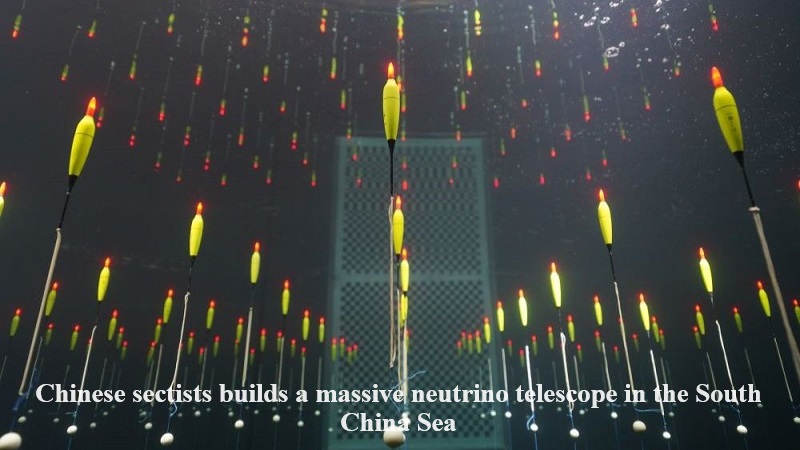
A massive neutrino telescope project has been initiated by Chinese scientists in the South China Sea, according to a report by the South China Morning Post (SCMP). The ambitious telescope, known as the Tropical Deep-sea Neutrino Telescope (Trident) or Hailing (Ocean Bell) in Chinese, is set to become the world’s largest detector for “ghost particles.” It will be situated 3,500 meters beneath the ocean’s surface. The goal of this project is to delve into the origins of cosmic rays, which have been a century-old enigma in the realm of exploring the extreme universe.
The Trident array, when completed in 2030, is expected to be the largest and most advanced of its kind worldwide. It will be anchored to the seabed in the Western Pacific Ocean, scanning the surrounding seawater for flashes of light generated by collisions between cosmic neutrinos and water molecules. Neutrinos are among the universe’s most abundant particles with mass, originating each time atomic nuclei combine or disintegrate.
Xu Donglian, the project’s chief scientist and spokesperson from Shanghai Jiao Tong University, explained the instrument’s capability. She stated that Trident would detect neutrinos that penetrate the Earth from the opposite side of the planet, utilizing Earth as a shield. The telescope’s equatorial location allows it to capture neutrinos from all directions, ensuring comprehensive all-sky observation without any blind spots.
As reported by the SCMP, approximately 100 billion ghost particles, known as neutrinos, traverse every square centimeter of the human body every second. Nevertheless, their lack of electrical charge and negligible mass make them interact minimally with other forms of matter.
During a press conference, project chair Jing Yipeng highlighted that the telescope would also serve in testing space-time symmetries and contribute to the search for quantum gravity and indirect exploration of dark matter.
In a paper published by the international journal Nature Astronomy, Xu and her colleagues from several prestigious Chinese universities disclosed that Trident is taking shape around 540 kilometers south of Hong Kong. The researchers anticipate that the telescope’s advanced photon-detection technology and substantial dimensions will enable it to observe the IceCube steady source candidate NGC 1068 with a 5? significance within a year of operation. This level of sensitivity is expected to inaugurate a new era in uncovering the origin of cosmic rays and probing fundamental physics across astronomical baselines.

Post Your Comments